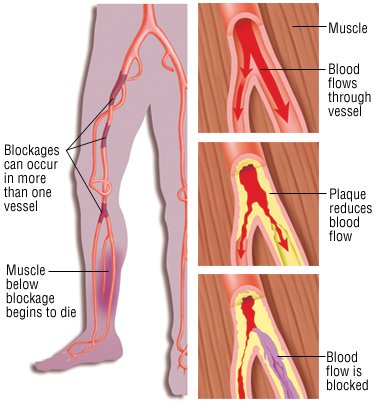What is Peripheral Arterial Disease?
Peripheral Arterial Disease (PAD) is the restriction of blood flow in the arteries of the leg. Commonly referred to as "poor circulation," the arteries become obstructed by plaque (made up of cholesterol and other materials.) This prevents the normal flow of oxygen-rich blood from reaching the legs and feet.
Signs and Symptoms
Most often, people who are in the early stages of PAD have no symptoms. By the time they do experience symptoms, the arteries are already significantly blocked. Common symptoms of PAD include:
- Leg pain or cramping that occurs when walking
- Leg pain or cramping that occurs when lying down
- Leg numbness/weakness
- Cold legs or feet
- Sores that won't heal on the toes, feet, or legs
- Changes in coloration of the legs
- Loss of hair on the legs and feet
- Changes in the color and thickness of the toenails
Risk Factors of PAD
- Being age 50 or older
- Being a current or former smoker
- Diabetes
- High blood pressure (hypertension)
- High cholesterol
- Personal or family history of PAD, heart disease, heart attack, or stroke
- Sedentary lifestyle (little or no exercise)
Diagnosis
Your podiatrist will thoroughly go over your personal and family history, as well as examining your legs and feet. If you have any of the risk factors listed above, further tests may be ordered.

